 |
 |
 |
| |
Telaprevir Resistance Disappears in 89% of Patients: Long-Term Follow-up of Patients with Chronic Hepatitis C Treated with Telaprevir in Combination with Peginterferon Alfa-2a and Ribavirin: Interim Analysis from the EXTEND Study
|
| |
| |
Reported by Jules Levin
AASLD Nov 2 2010 Boston
from Jules: this is a very interesting story to come out of AASLD, with patients who failed telaprevir & having telaprevir resistance mutations, over the course of the next 2 years in 89% of these patients resistance mutations were gone, or not detectable. The results are encouraging. The R155K mutation is a worrisome one but disappeared in this study, below low levels of detection. This affects the discussion around HCV drug resistance regarding protease inhibitors and its clinical impact on treatment decision making. Since resistance did emerge for these patients if retreated with the same regimen the same level of resistance would likely emerge unless perhaps if the resistance emerged because they did not follow strict response-guided therapy (RGT) stopping rules or were not adherent, emphasizing the importance of strictly observing these recommendations. What would happen if we re-treat these patients? Would their resistance return to pre-treatment levels or would re-treatment trigger stronger & quicker resistance to emerge? Would adding a 2nd oral HCV drug plus a protease + peg/rbv or 3 orals only including a protease if we establish that an oral only regimen does result in SVR suppress resistance and result in SVR? Or can they begin a new regimen with different classes of oral drug with or without peg/rbv?
It will be crucial for patients to return to the clinician's office to check viral load at week 4 and week 12 if taking telaprevir, or week 8 and 24 if taking boceprevir, to prevent further resistance from accumulating if their viral load is detectable at those timepoints.
Some comments from several noted researchers/clinicians regarding drug resistance:
"Since there is no long term repository in HCV, the implications of "hidden" resistance are not the same. Even if resistance is present at 0.5%, repeat treatment with TVR would quickly knock out 99.5% of virus. Whether the residual resistant virus is 0.5% or 0.00005%, if you don't have another set of drugs (IFN,RBV, DAA) that can wipe out the residual population, it will grow up."
"these patients are still likely enriched for PI resistant variants, so they
may still be at risk for breakthroughs with future treatment containing PIs, but would the mutations now emerge more
strongly and quickly? It's hard to tell, only time and further clinical testing will
tell. At the very least, the findings suggest that there will be a relatively
sizable lag period for recovery of original repertoire."
"Good to see the result, but we still don't know whether enough resistance remains to affect re-treatment response. So, the really important clinical question is unresolved, and the result we have isnt surprising. Its good the result wasn't worse. I think we have an encouraging result. Clinicians and patients NEED to be thinking about resistance (to motivate best practices)....
.....Next-generation sequencing ("deep sequencing", e.g. with a 454 machine) would probably be more sensitive - detect resistant variants at a lower frequency - but clonal sequencing is probably enough for this purpose. Next steps are (a) study larger numbers of people in the same way, but more frequently and for longer follow-up, to determine the range of decay rates of the resistant forms, and (b) re-treat with close follow-up to determine whether resistance will re-emerge at a high rate. Coupling (a) with (b) will guide the use (or uselessness) of resistance testing in the future. My sense is that the risk of resistance is never zero, so all we're asking is whether the risk returns to pre-treatment levels. Reasons that might not happen (i.e. enhanced risk) include (i) levels of resistant virus are higher, to a clinically significant degree, after unsuccessful treatment, and (ii) resistance mutations return to baseline but compensatory mutations, which make resistant virus more fit, are at a higher level and contribute to emergence of resistance with retreatment."
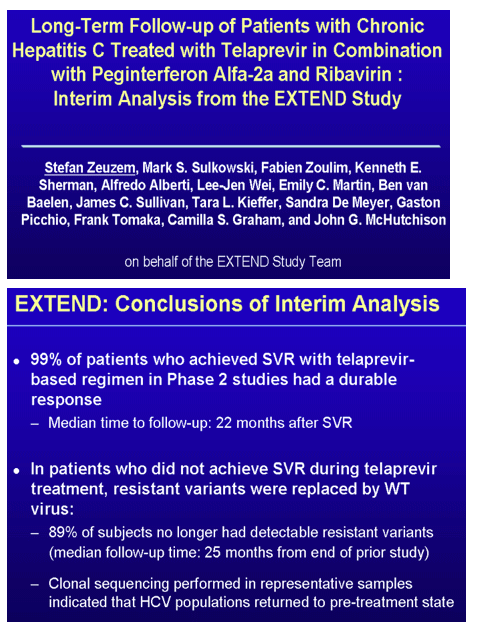
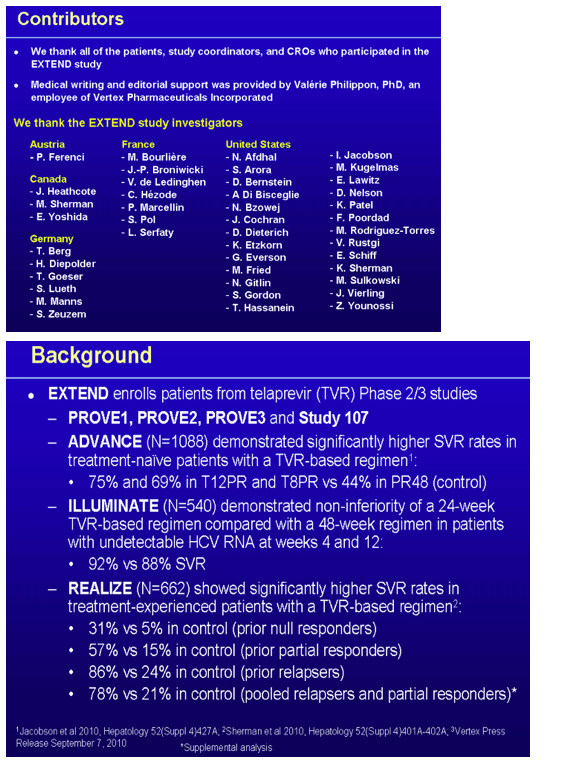
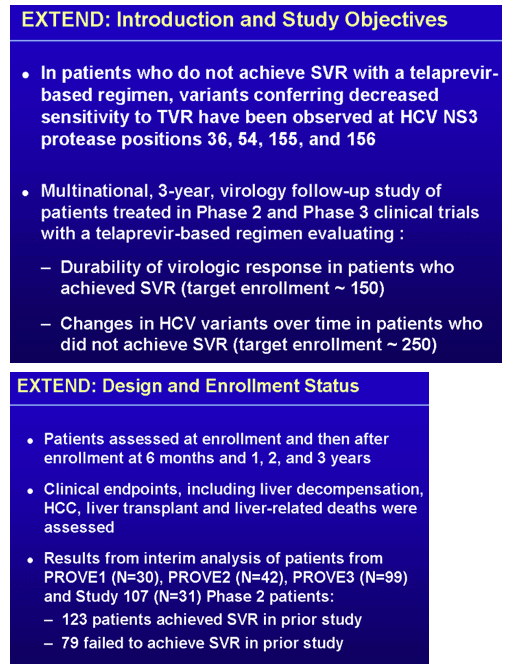
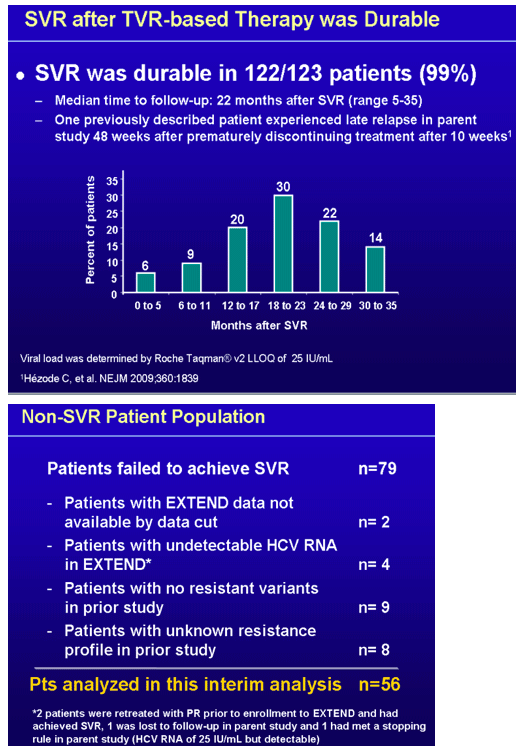
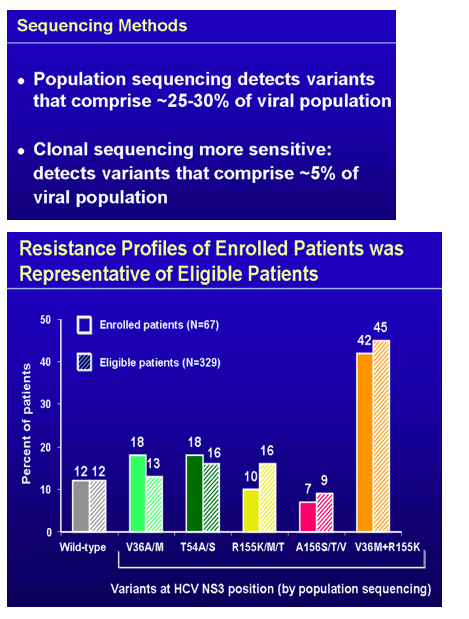

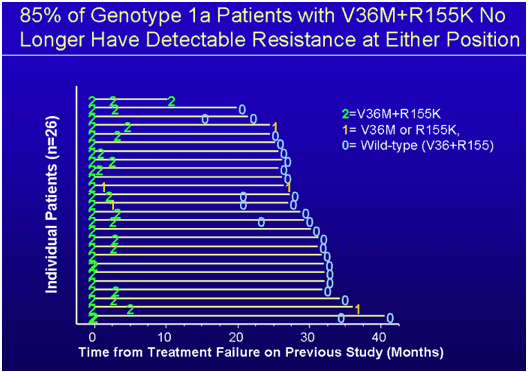
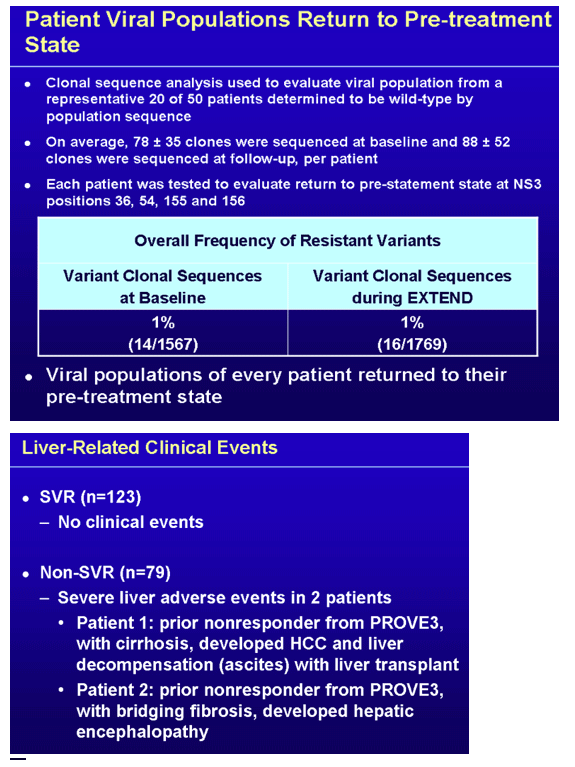
|
| |
|
 |
 |
|
|